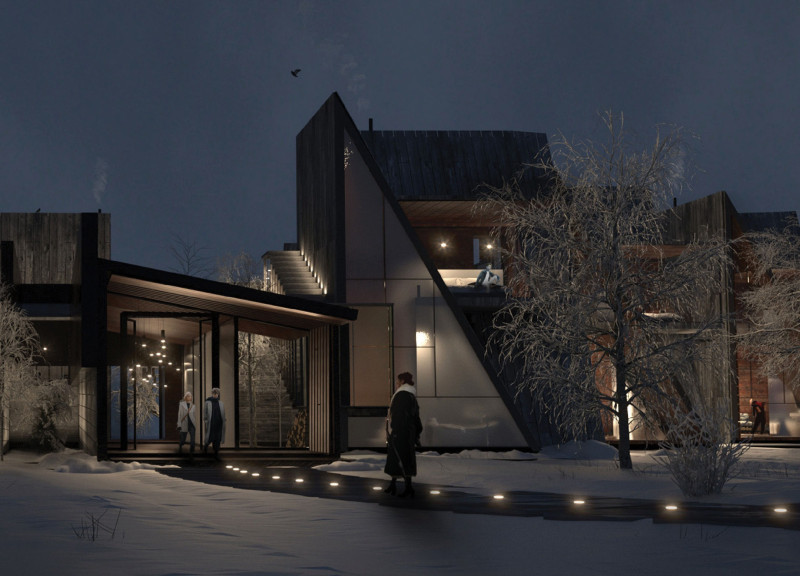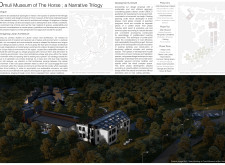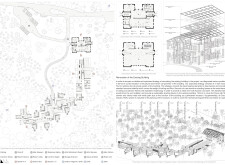5 key facts about this project
The Omuli Museum of the Horse is located in Latvia, connecting visitors with the country’s cultural heritage and natural environment. Serving as both a museum and a space for artists, the design reflects Latvia’s history through sharp lines and distinct forms. The museum aims to foster creativity and community engagement while promoting a deeper understanding of equine culture.
Design Framework
The development consists of three phases, each with specific functions yet interconnected in purpose. Phase One introduces an artist resort and workshop unit tailored for artists. This area provides flexible creative spaces that encourage collaboration, making it a supportive environment for artistic work and expression.
Renovation Considerations
Phase Two focuses on renovating the existing building. Structural concerns are addressed to ensure the building’s durability. Steel beams enhance the building's stability, while aluminum shading frames help manage sunlight. These choices support an effective internal climate while preserving the original design’s character.
Community-focused Spaces
Phase Three expands the facility by adding resort units alongside common areas. These spaces encourage visitors to interact and engage with one another, promoting a sense of community. The decision to maintain a low-height profile helps the building blend naturally with the landscape, reducing its visual impact and emphasizing its connection to the surrounding environment.
Transparency and Interaction
A key feature of the museum is its focus on transparency, achieved through large openings that invite in natural light. This design creates a flow between indoor and outdoor areas. As visitors move through the space, they experience a strong connection to the landscape outside. The design captures the essence of the environment, allowing nature to become part of the overall experience.






















































